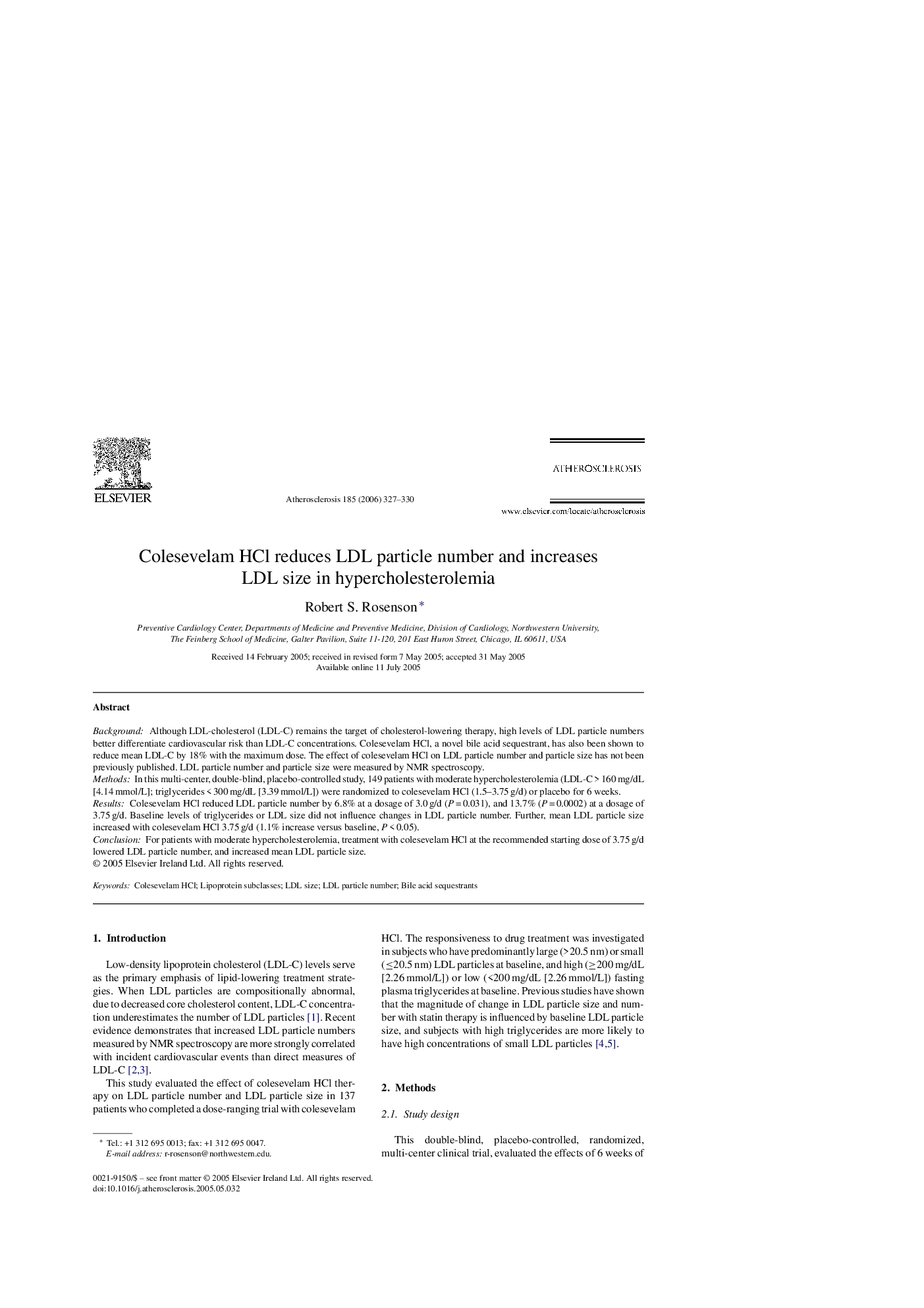| Article ID | Journal | Published Year | Pages | File Type |
|---|---|---|---|---|
| 2895332 | Atherosclerosis | 2006 | 4 Pages |
BackgroundAlthough LDL-cholesterol (LDL-C) remains the target of cholesterol-lowering therapy, high levels of LDL particle numbers better differentiate cardiovascular risk than LDL-C concentrations. Colesevelam HCl, a novel bile acid sequestrant, has also been shown to reduce mean LDL-C by 18% with the maximum dose. The effect of colesevelam HCl on LDL particle number and particle size has not been previously published. LDL particle number and particle size were measured by NMR spectroscopy.MethodsIn this multi-center, double-blind, placebo-controlled study, 149 patients with moderate hypercholesterolemia (LDL-C > 160 mg/dL [4.14 mmol/L]; triglycerides < 300 mg/dL [3.39 mmol/L]) were randomized to colesevelam HCl (1.5–3.75 g/d) or placebo for 6 weeks.ResultsColesevelam HCl reduced LDL particle number by 6.8% at a dosage of 3.0 g/d (P = 0.031), and 13.7% (P = 0.0002) at a dosage of 3.75 g/d. Baseline levels of triglycerides or LDL size did not influence changes in LDL particle number. Further, mean LDL particle size increased with colesevelam HCl 3.75 g/d (1.1% increase versus baseline, P < 0.05).ConclusionFor patients with moderate hypercholesterolemia, treatment with colesevelam HCl at the recommended starting dose of 3.75 g/d lowered LDL particle number, and increased mean LDL particle size.
